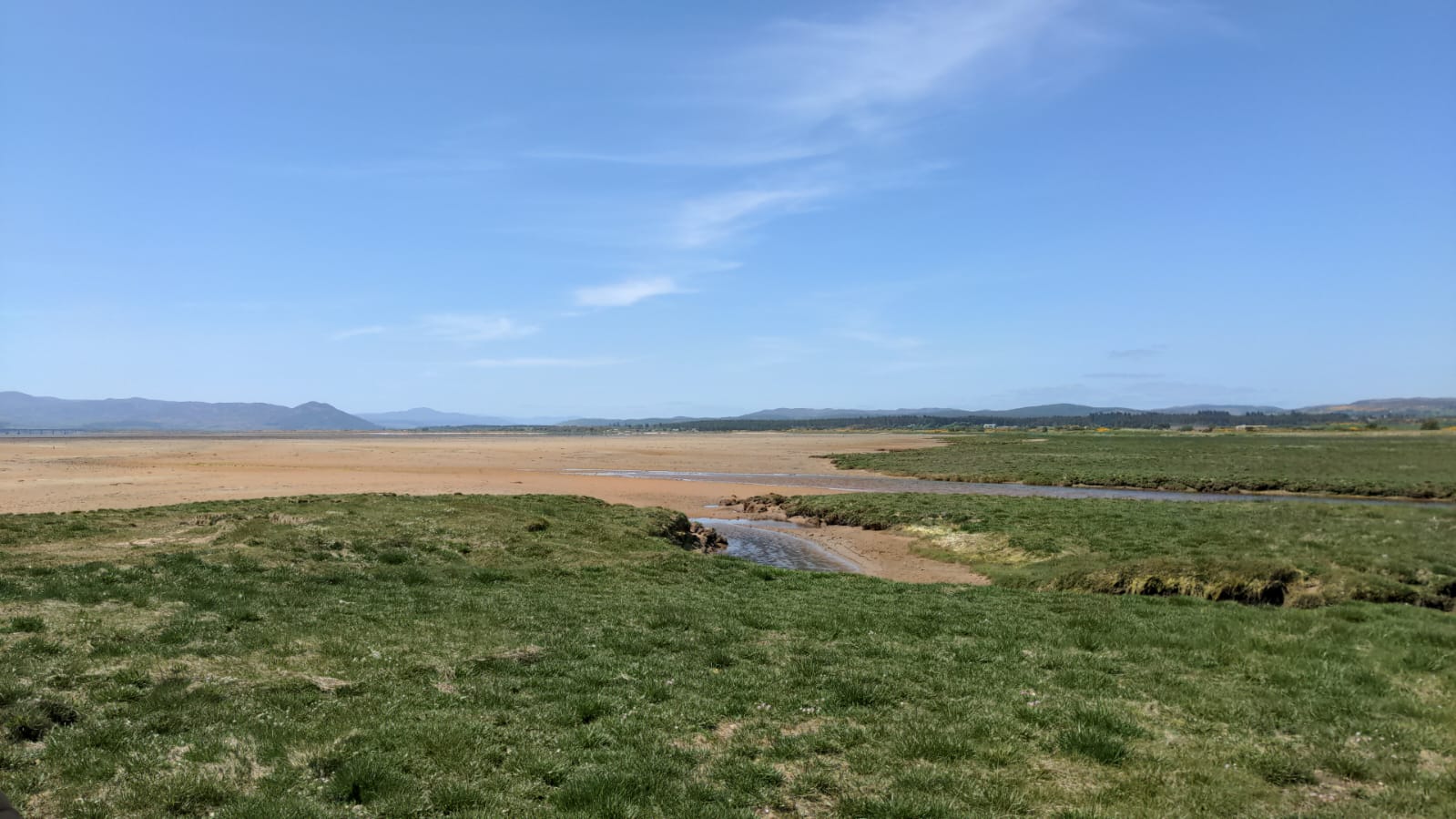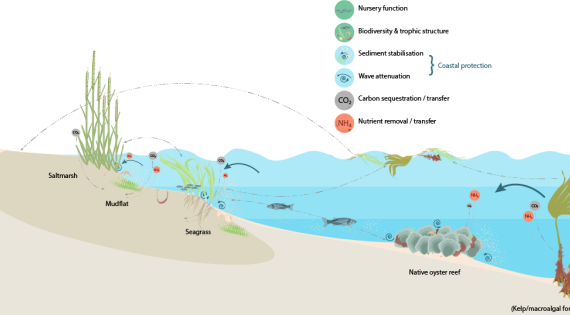Reviewing the evidence and vision for a joined-up approach to coastal habitat restoration
Habitat connectivity is how ecosystems affect each other through a conversation of geophysical, chemical and biological processes. For example, physical processes affected by connectivity may be the transfer of sediment or water which can in turn affect the flow of carbon and nutrients. Ecological processes may include the flow of species or genotypes, promoting resilience and evolutionary divergence, but also enabling activities such as daily migration for feeding and shelter at different life stages.
There is a strong body of research on habitat connectivity in terrestrial landscape restoration that has informed modelling platforms for conservation planning; however, this has not translated well to marine and freshwater ecosystems. Since the mid-1800s the UK has lost 92% of its seagrass, 95% of native oyster reef and 85% of saltmarsh. Targeted restoration of linked habitats may be key to rejuvenating the ecosystems we have destroyed and for future adjustment to challenges such as sea level rise, protection against storms and flooding, food security and pollution as human populations increase.
Following development of UK handbooks for Restoring Meadow, Marsh and Reef, UKCEH are collaborating with the University of Portsmouth and the University of Essex to investigate the extent of research into seascape habitat connectivity and seascape restoration on a global and UK-wide scale.



